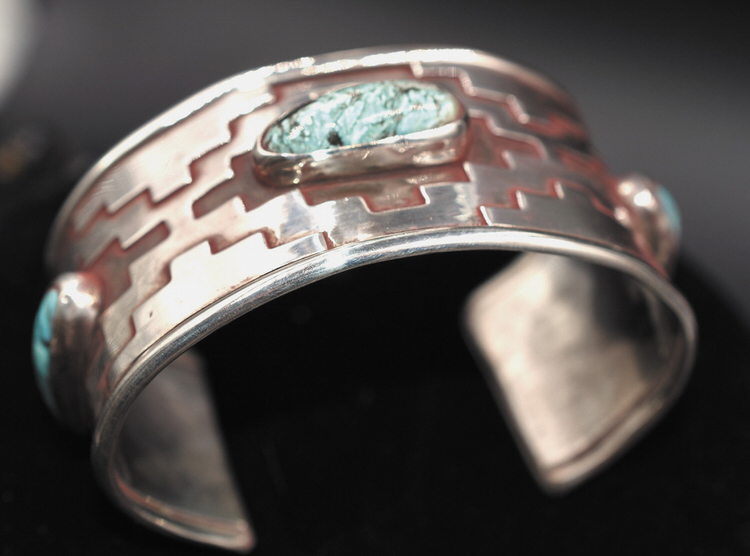 Doug Williams, Volunteer Publicity Coordinator
Doug Williams, Volunteer Publicity Coordinator
Well, okay, you didn’t make a silver bracelet, but you could have! All you need to do is join the Sun Lakes Rock, Gem, Silver, & Creative Crafts Club. That’s our long name, but most of the time we just call ourselves “The Rock Club.”
Our nearly 200 members meet every third Monday at 10 a.m. in the Cottonwood Lecture Hall, October through April. There you will meet and chat with the instructors of the 20 different classes we offer (see them online at our website slrgs.com).
Silver, as a class option, has two courses: Silver One and Silver Two, with Silver One being a prerequisite to taking the more advanced Silver Two. We also have two highly experienced instructors who teach these classes. Susan Carter and Richard Sanderville both have extraordinary skills in fabricating jewelry from silver.
Silver is an exciting metal to work with, as it is malleable and therefore bends and stretches and easily adheres (via torch heat) to other silver pieces as one builds or constructs a piece of jewelry.
Solid sterling silver is heavy and much preferred over plate or silverplate, which is a very thin electronic covering of silver over a less expensive base metal, such as copper or brass. Note, silverplate looks beautiful when polished, but it is cheap. Solid silver is very heavy and much more expensive.
Sterling silver is .925 percent pure solid silver with .075 percent copper added for strength.
Fine silver is .9999 pure solid silver, which bends easily and is used to form bezels, which are soldered onto a piece of sterling to affix a cabochon (cut and polished) semi-precious stone. The top edges of fine bezels can be curved over the rounded sides of the cabochon to hold it in place. No glue or cement is needed with a properly sized bezel and cabochon.
Sterling silver is sold in various sheet thicknesses, i.e., 16, 18, 20, 22, and 24 gauges. Sixteen gauge is very thick and expensive, while 26 gauge is quite thin and inexpensive. Silver is also sold as wire in shapes such as round, half round, triangle, and square, etc.
Solder is used as the medium (with the help of flux), which enables the silver to run, or flow, together and become one. Trick: Only paint the flux exactly where you want the solder to flow and adhere. Solder comes in various temperature melt levels, i.e., hard, medium, easy, and extra-easy. The process begins by using hard solder, which melts at the highest level. Secondly, one applies medium solder, which melts at a temperature just below hard solder. In this manner, one can continue soldering pieces onto the original project without destroying previously soldered pieces. The third solder is easy, which melts, or runs, at a cooler temperature, just below medium. Last is the extra-easy solder, which allows the mixed metal artist to solder a fourth piece of metal onto the previous three pieces soldered at lesser melt degrees.
You can do it!
